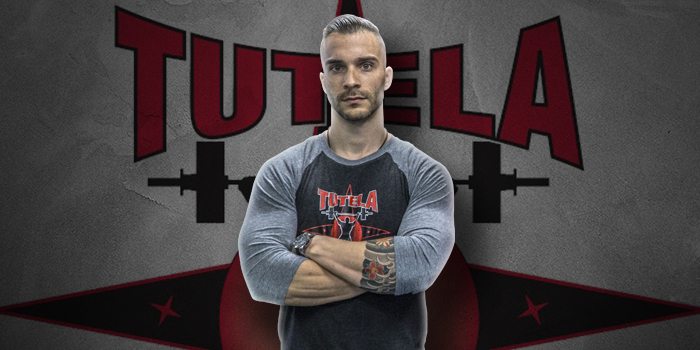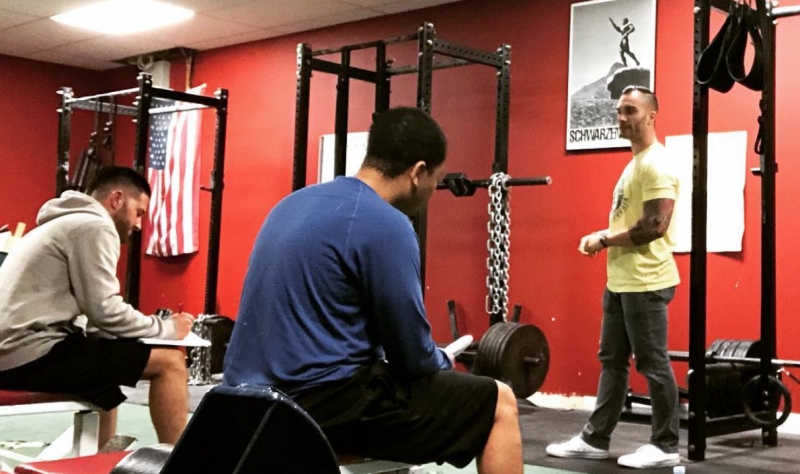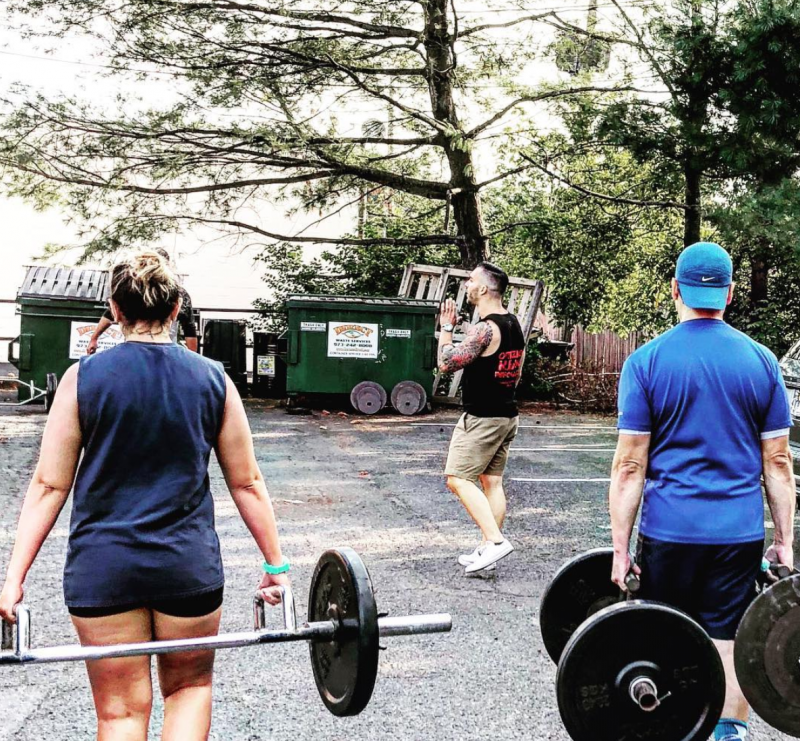
I opened my facility, Tutela Training Systems, LLC in Clark, NJ, back in 2012. There sure as hell was a shit-ton of struggles early on. Not only on the business side of things but also there was a lot of confusion on how to design an optimal training program for my clients who were training in a group program.
In the early stages, I was the only person training people. I knew that training people in groups was what was going to pay the bills and put food on the table, so I adopted that model.
As a coach, I had a tough time developing programs in this manner. In the same training session, there were beginners, advanced trainees, people who had injuries, men, women, and sometimes even children. Some of these training sessions were packing my 900-square-foot facility with 14 or 15 people. Trying to manage all of this at once was making my head spin.
RECENT: Actionable Steps to Defeat Your Doubt
How the hell do I design an effective and appropriate program for all of these different types of people who are training in the same session? The last thing I wanted to do was give my clients a program that was less than optimal, like a lot of the group training facilities out there.
I did my best to make it work in the moment, but I knew that it wasn’t going to be sustainable. I also knew that it wasn’t what was best for my clients who were paying me money to get them results.
Unfortunately, many group training facilities out there don’t give a shit about any of that, nor do they even know how to (or care to, for that matter) program. So, they have everyone doing the same thing, day in and day out. In the short term, something is better than nothing for a client who was playing Fortnite all day. That is, as long as they aren’t setting them up for injury, which in many instances, is the case.

However, if you want to train people the right way, then you’re going to need to figure out how to design a training program that will be optimal for each individual member within a group environment. Over the last 3 or 4 years, I think we were able to figure out a pretty good way to do that. I wanted to share with you what we do at our facility, in the hopes that it will help more coaches to realize that there is a way to train their members in groups more intelligently. It just takes more effort to develop these systems and to put them in place. These seven steps may be obvious to some of you, but I want to go over our process from the ground up.
Here it goes…
1. Design different programs for different people.
Having everyone train in the same program just ain’t gonna work. There are too many variables involved, and you’ll be doing many of your clients a disservice. Have a main purpose and “avatar,” if you will, for each training program that you have in place. In this way, you can periodize, progress, regress, or modify each individual program the way you want. The way you’ll decide who’s fit for each program will be based on your discretion through an initial assessment.
Which brings me to my next step…
2. Onboard every new client with an initial assessment/orientation.
Every good program starts with a sit-down to discuss goals, medical history, past surgeries, and all things alike. You can follow up by taking new members through a mobility screening or dynamic warm-up to assess how they move, their conditioning levels, their relative strength, and their levels of stability. Then, make note of any particular restrictions they may have.
This is also going to be where you decide which program will be best suited for them.
3. Design a customized prehab plan for each individual after the initial assessment.
I always stress to my members that they must arrive 15 minutes prior to the start of their training sessions. This is so that they can take full advantage of their prehab routines that we design for them following their initial assessments.
After their assessments, we’ll be able to pick out some of the specific areas they’ll need to work on regarding flexibility, mobility, and soft tissue.
Prior to the start of each training session, we remind each member of the prehab routine and how to go about it.
4. Design each program with a specific goal, and modify the program to fit the needs of each individual.
Ok, you have different programs geared for different people. Now, it’s time to design your programs for the main demographic you’ll have training in that program. For example, if you have one program for intermediate-advanced lifters who are generally healthy and range from the ages of 30-45, design your template for that demographic. However, for those who train in that program but are outside of that demographic, or those who have special considerations, you’re going to have to modify that program for them.
Let’s say you have an advanced guy in your “advanced” program. But this particular guy has severe lumbar disc issues. On a day that you have back squats programmed, do you just throw him under the bar and have him get to work? Of course not.
This is where you’ll have to modify this particular movement for this individual. Maybe you give him a single-leg squat variation. Maybe a goblet squat. There are plenty of options out there, but it’s important to develop a systematic approach so that you and your coaches could pick the right alternative exercise within each individual program.
Another possibility may be that you have a beginner training in an advanced program due to that person’s schedule. At the end of the day, it is your business, and it’s hard to turn someone away who wants your help, so you’re going to make an exception for them.
In these instances, we will plug in exercises for that individual but still use the same template we have programmed, and possibly modify the rep range.
For example, we may have a barbell bench press programmed for a max set of 5, and your beginner can’t even do a bodyweight push-up. We won’t just have him press with shit technique. He’s not going to get any value out of that.
Instead, we may have that person work on eccentric-only push-ups with a 3-second tempo for sets of 6-8 to learn the proper movement pattern and to develop a base. We’ll even have that person right in the mix with the other guys so that he doesn’t feel like an outcast.
That’s one way to create a killer culture in your gym and to have people get excited to come back. It builds comradery.
It’s also a way for everyone to work within the same program while working within their own capabilities.
5. Give out notebooks, and have your members track their weights.
If you’re trying to keep track of the weights each member uses along with the reps he or she has achieved, you’re going to have a very tough time as your business grows. I have a very old-school approach at Tutela Training Systems, where we give out notebooks to all new members and they are responsible for writing out each training cycle, the weights they use, the reps they achieved, and any modifications they made.
In this way, your clients will begin to understand their progress and even have something to aim for. It helps them to create goals and eliminates the chaos of everyone asking you what weight he or she should use.
For those who we have work to a 1RM, 3RM, or 5RM, we have them record their maxes in the front covers of their notebooks. In this way, they have them readily available if we’re utilizing percentages.
6. Create different indicator lifts for those who can’t hit the big 3.
We have many members in our gym who can’t train the big 3 for a variety of reasons. With that said, these members should still have a way to measure their progress. We have them record their personal records for these indicator lifts in the front parts of their notebooks and use them as references. When we test, some guys will be testing a 3RM on the bench, squat, and deadlift. These folks, however, will test these new indicator lifts.
This could be a push-up and chin-up rep test, it could be a 10RM on a Bulgarian split squat, a max distance farmer’s carry with a percentage of his bodyweight…the possibilities are endless. Just be sure to design these new indicator lifts based on that member’s specific needs.
7. Hire Staff
For years, Tutela Training Systems was a one-man show. I did everything. Did every training session, designed every program, cleaned the toilets, cleaned the windows, marketing…everything.
As my business grew, I began to get fried. I was exhausted and knew that something had to change to get to the next level.
So, I hired a coach to start running some of the sessions. Once I had a part-time coach on board, the business started to grow a little faster. I felt recharged and had more time to focus on running the business.
After a few months, we brought in an intern to help out during sessions. He eventually became a full-time coach.
As the business continued to grow, I hired an assistant for administrative work, a cleaning crew, and a marketing company. As a result, my business literally tripled.
My point is, a lot of coaches tend to try and do everything themselves. Myself included. But if you want to grow, you’re going to need a team to do so. If you can’t afford to hire anyone at the moment, then I suggest you head over to a local college and chat with the head of the exercise science program. Their students usually have to complete internships to get their degrees, and from my experience, the professor will be thrilled to get you on board.
Trust me, having the right people in place is a necessary step you’re going to have to take to up your business.
When you run group sessions in this manner, you’ve now created structure and placed an emphasis on individual needs, rather than just throwing everyone to the wolves.
It is our goal to get our clients better, never worse, so let’s train them that way.
People will immediately notice the difference between you and the gimmicks out there, and as a result, your business will grow.
I hope this helps, guys.
Thanks for reading.











